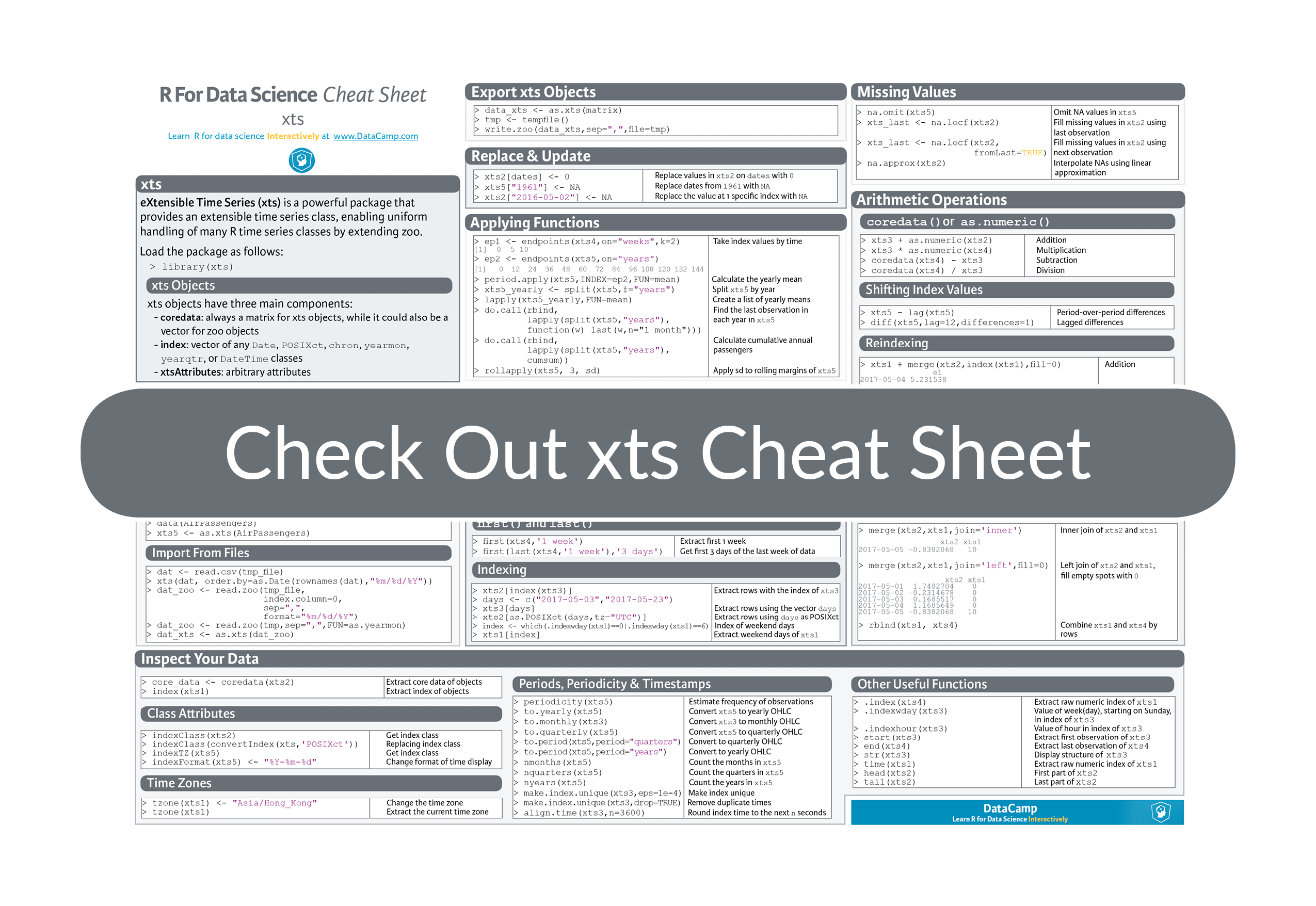Cheatsheets Use the cheatsheets that are built into the RStudio IDE to jog your memory about R Markdown. Go to File Help Cheatsheets R Markdown Cheat Sheet to open the main R Markdown cheatsheet, pictured above. Go to File Help Markdown Quick Reference to open the Markdown Quick Reference in your help pane.
- Converting between common data types in R. Can always go from a higher value in the table to a lower value. a a 1 'apple' The Environment Variable Assignment ls List all variables in the environment. Rm(x) Remove x from the environment.
- R recognizes 600 time zones. Each encodes the time zone, Daylight Savings Time, and historical calendar variations for an area. R assigns one time zone per vector. Use the UTC time zone to avoid Daylight Savings. OlsonNames Returns a list of valid time zone names. OlsonNames withtz(time, tzone = ') Get the same date-time in a new.
I have taken a case study of Rene Romero Schuler paintings to prove the point that arts is indeed well connected with analytics and mathematics.
Rene is world renowned artist and her work has been instrumental building a bridge between Mathematics and Art. Van Gogh expressed concept of Turbulence in his paintings. Rene's work takes one step ahead in expressing mathematical concepts on the canvas. This post is an attempt to understand mathematical modeling and business analytics with respect to Rene's artwork.
Torrent sims for mac. First thoughts after looking at Rene's tremendous artwork:
Github R Cheatsheets
Similarly to mathematics, painting is also a semiotic system, a particular universe of symbols. Both mathematics and art are concerned with abstract ideas. Like pure mathematics, abstract art does not imitate reality but renders it. Paralleling pure mathematics, abstract art also involves the study of forms devoid of subject matter. Pure mathematics and abstract art both express aesthetic dimensions of the human experience. They are both meaningless in themselves and acquire meaning only through interpretation.
Some of Rene Schuler work falls under category of modern expressionism.

Even the highest quality of a brush, canvas and colors on the painter's palette by themselves cannot produce art. So in order to make an ingenious work in mathematics, or a magnificent masterpiece in painting, the act of creation must occur, in which both the mathematician and the artist apply their basic tools to the subject through cognitive processes that tap their talents, skills and intellect.
Some of her paintings are based on Platonic solids and fractal geometry. The painting on the right is based on concepts of thermo-economics showing mirrored economies with different entropies. She manages to create mathematical beauty and is yet able to pull off perfect abstract paintings which make us reflect and think for a while in today's 'rush-hour' life.
It is high time that we business and research communities acknowledge such a tremendous work and add some flavor to business analytics products.
Here are some relevant research works on mathematics and art.

R Programming Cheat Sheets
- Origami design secrets: mathematical methods for an ancient art
Robert J. Lang, Thomas C. Hull - Fractal Cosmos: The Art of Mathematical Design
Jeff Berkowitz, Lifesmith Fractals - Looking at a Painting with a Mathematical Eye
Marion Walter, For the Learning of Mathematics, Vol. 21, No. 2 (Jul., 2001), pp. 26-30 - Re-constructing a painting with geometric eyes
N Sinclair, For the learning of mathematics, 2002 - JSTOR - From Art to Mathematics in the Paintings of Theo van Doesburg, by Paola Vighi, Igino Aschieri
- 'Shape Grammars and the Generative Specification of Painting and Sculpture' by George Stiny and James Gips. Presented at IFIP Congress 71 in Ljubljana, Yugoslavia. Selected as the Best Submitted Paper. Published in the Proceedings: C V Freiman (ed.) Information Processing 71 (Amsterdam: North- Holland, 1972) 1460-1465.
